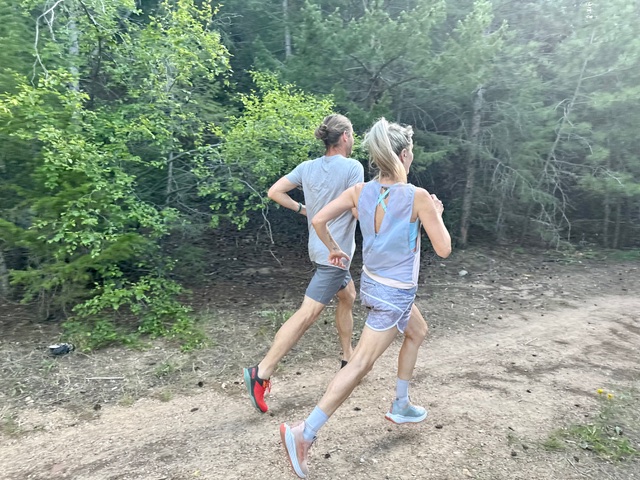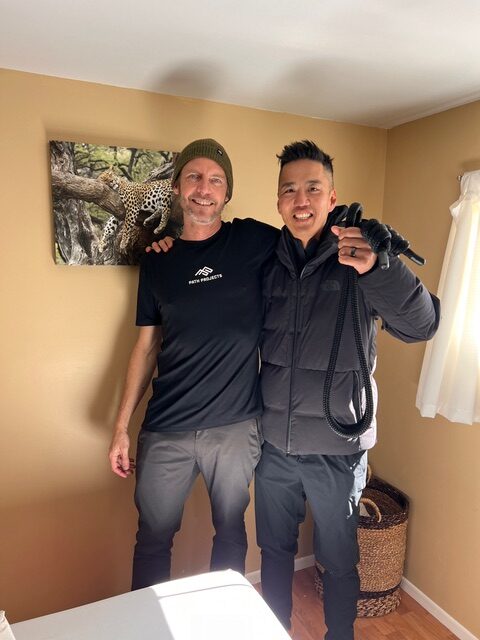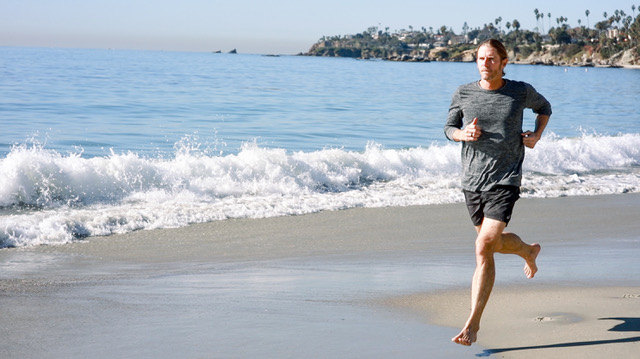Today we share the story and wisdom from my amazing friend Dr. Lawrence van Lingen. Lawrence has emerged as a fresh light in the complex maze of figuring out how to restore movement and heal chronic running injuries when athletes are in the well of “there is no hope”. This recent article gives some background on some of his mysterious ways
Meet the “Genius of Running” Behind Jan Frodeno and Taylor Knibb’s Comeback Stories
Why are already-fast world champions flocking to Lawrence van Lingen to revamp their run form?
Now for the interview:
Lawrence we connected probably over 10 years ago in LA. You immediately struck me as someone who saw things differently based on your vast experience and curiosity. I learned the Turkish Getup and Awesomizer from you and continue to do these exercises almost daily. I have learned a lot also from text threads with you. Its a privilege to share with our readers what you have learned.
A few words of wisdom I remember from our conversations:
If you put pain into your body, think carefully about how you are going to get it out.
Fascia… treat it mean to keep it keen
Consider long term consequence
Treat the dysfunction, not the pain
Don’t feed the dysfunction
(on treatment)…What you put in is what you put in
Training to failure is teaching failure
Simple excellence trumps confused comprehensive
Don’t sit on your ass and be passive

…………………………
What is your background and how did you become interested in movement as a specialty?
I initially trained as a chiropractor and got into that profession because of a very positive experience seeing a very healthy and active Chiropractor as a teenager and I knew I wanted to be in the wellness part of health and not the “disease” part. I got into movement when I was treating people, sent them out for rehab and did not notice any difference in their patterns, so I started doing my own rehabilitation and movement and then I started combining treatment and movement. The changes you could make were so tangible and people held their treatment better, and then I started realizing how beneficial it could be for performance and I never looked back. I think also movement is so complex and all encompassing that it keeps me endlessly occupied, you will never fully understand movement and the human body, I’m always learning and understanding on a deeper level.
What types of clients and athletes do you work with?
I tongue in cheek say the elite and desperate. I work with anyone with an injury, movement problem, posture problem or pain. At present I mostly work with triathletes, particularly with their running. But I have worked with world class swimmers, cyclists, downhill mountain bikers, rugby and cricket players, NFL players, golfers. Now that I am in Boulder I am starting to make inroads with the running community.
Your rehab of elite runners and triathletes is gaining international attention. Any specific stories you are allowed to share that carry some really important lessons for us?
I think Jan Frodeno’s story is powerful. He reached out and said that no one he knows can help him anymore and he knows the best in the world. So Jan was at rock bottom, both elite and desperate. He was pretty much running again in 3 weeks just from remote and online work. Jan really helped reframe what is possible when it comes to rehab with movement. When he commits to something he is all in, 100% with absolute trust. The results were incredible, he also pushed me to learn and grow and much of the way I work now with the rope and tire work is distilled out from working with Jan. A lot of the time, because I have an unconventional approach, I get push back or resistance, or it may conflict with people’s perceptions of the status quo, or people want a little bit to add to their process. Generally we do better by understanding and doing things deeper and not adding too much width or breadth or as I like to say, add signal not noise. Certainly we try avoid conflicting signal. Jan gave up his physiotherapist, his strength coach and just 100% focused on himself, his movement and his emotional relationship with his body, reframed his world view and at 42 went from rock bottom to his best performance.
After working with so many athletes is there something new you are learning and want to share?
At the moment the way to teach people to run healthily using a combination or rope flow, backwards walking and tire walking is so powerful [see video link at end] . It provides a very powerful framework to help people understand and empower their movement. The results are so incredible, for the right person at the right time it is life changing or career changing. We have a pro triathlete who’s running was getting worse and worse, take nearly a minute per mile off her run pace win 3 weeks. It’s not just the increase in pace, it’s the joy and sense of empowerment and liberation as they learn to move with more fluidity, grace and ease.
Its an Olympic year. It must bring you joy helping people achieve goals. What brings you joy?
I think it’s more a sense of purpose, I know my purpose in life and that its to help people trust and understand their movement. There are periods of joy, but it’s a rollercoaster. The highs with Jan were very high, the lows were very low and if you want to be a part of his process you are in for it- all of the emotions, good and bad. Many Olympians experience deep unease or even depression after winning a gold medal, so I am much more concerned with the process and the journey than outcomes. Seek mastery not medals. In order to help people you have to get into the weeds, and this is where most people don’t want to go, and where a lot of people fall short in the performance world. It is easy to not acknowledge mistakes or not recognize when we are out of our depth or to gloss over fundamentals. Perhaps if you are seeking joy, it’s harder to see things as they are and not as you would like them to be. For me and my athletes I think it is much more important to focus on the process and the joys, and lows are part of the journey and you need to embrace both. At the Tokyo Olympics there were so many devastated athletes at the finish line, that is heart breaking. An Olympic race should be a celebration of your craft and a reflection of all your hard work and dedication. So I think much can be done to shift mindset to a healthier and sustainable place. Athletes start making better decisions when their goals, training and lifestyle are congruent with their core beliefs.
Any messages to the recreational athletes in the group? To the high performers?
Always think long term and have the mindset that you want to run forever, that will really help you focus on moving better. Running is an efficiency sport and when you run well not only its it a performance enhancer it is also much kinder to your joints and health. Too many people try too hard or push themselves too hard or have a perception that running is a hard sport. It is a hard and honest sport, but that does not mean you should seek to make it harder.
Any links to share connecting people with you and your work?
@lawrencevanlingen
@innerunner
For a really nice video of 4 keys exercises Lawrence recommends view this video and practice!
A brilliant article on running biomechanics
Lawrence shared a blog after one of our conversations a few years back….check it out
Thank you Lawrence for all you do! You keep us curious. Hope to see you again soon 😊



A Few pics of Lawrence at work and play!







